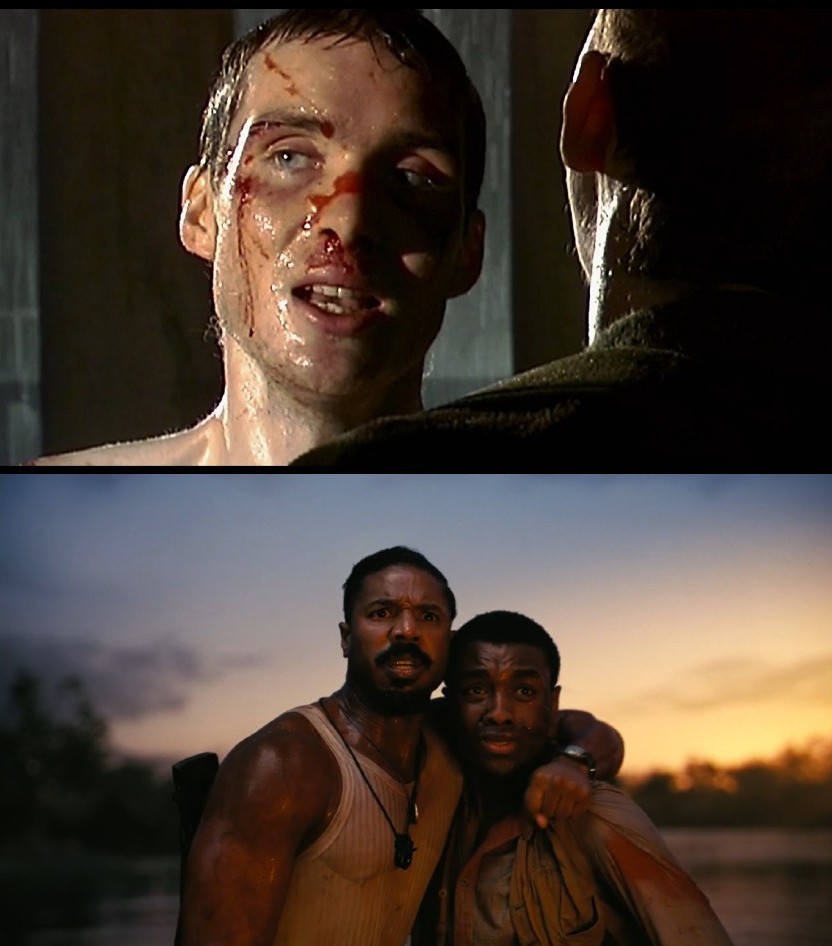At first glance, it may seem that 28 Days Later (2002) and Sinners (2025) are similar only in genre. These are stories about different eras, different monsters, and, in general, with different moods. However, both films reflect the main fears and moods of their eras: the 2000s in 28 Days Later and the 1930s in The Sinners, and come to a similar conclusion that people should fear not cataclysms or abstract monsters, but other people.
The zombies in 28 Days Later, unlike the classic interpretation of zombies from Haitian culture or George Romero’s interpretation (Shea, 2022), do not have a mystical origin, but are victims of a virus that causes uncontrollable rage, which is a much more realistic scenario than voodoo magic or a curse and reflects people’s fear of infectious diseases like HIV in the late 1990s and early 2000s. Moreover, all this virus does is make people feel uncontrollable rage that overpowers all other feelings, that is, it brings out the feelings that are already inside a person, and the most important thing about these zombies is that they are not the main antagonistic force in this film, but the people who, after the disaster strikes, abandon moral and ethical norms and descend to the primitive “law of the jungle” and “kill or be killed.” And the scariest thing is that those who try to remain human until the very end, such as Sergeant Farrell, who tried to protect Selena and Hannah from his brutalized colleagues and resolve everything peacefully, do not survive. The film reflects this idea through Major West, who, during dialogue with Jim, says: “Since it began, who have you killed? You wouldn’t be alive now if you hadn’t killed somebody” (Boyle, 2002, 01:20:10). The idea is that people in situations that differ from “normality” lose their humanity, and the only way to fight this is to also abandon humanity. This idea conveys the notion that one of the main fears of modern man is the fear of civilization’s collapse and of other people and what they are capable of.
The vampires in Sinners have mystical origins and date back to times far more ancient than the 1930s, when the events of the film take place. However, the vampires in this story are not scary because they are stronger, faster, and more resilient than humans, but because they are intelligent and manipulative, which connects Sinners to 28 Days Later in the idea that man’s worst enemy is another man. But unlike 28 Days Later, the vampires in Sinners are not a reflection of the natural fury inherent in humans, but a metaphor for colonialism and the suppression of small cultures. The main antagonist of the film, Remmick, seeks out people with incredible musical talents in order to appropriate those talents and music for himself, which likens him to colonizers who appropriate the cultural and historical heritage of the colonized country. Interestingly, Remmick himself is a victim of colonialism. He talks about this in a conversation with Sammie when they say the prayer, “Long ago… the men who stole my father’s land forced these words upon us. I hated these men, but the words still bring me comfort” (Coogler, 2025, 01:51:50). This detail echoes the idea that vampirism is a metaphor for colonialism. After all, colonialists not only take away the culture of an oppressed group, but also impose their own culture along with the ideas of colonialism. The vampires in Sinners themselves reflect the fear of the black population in the United States in the 1930s that their culture, and in particular their music, could be taken away from them by other men.
Despite striking differences in settings, 28 Days Later and Sinners reflect very real fears of generations through stories about non-existent monsters. Whether it’s the fear of viral infections and the collapse of civilization in 28 Days Later, or colonialism and the possibility of a people’s cultural heritage being taken away in Sinners. Moreover, the ultimate message of both films is quite similar in essence. All evil in this world comes not from abstract monsters in the dark, but from people who are capable of terrible things.
Sources:
Shea, C. (2022, October 24). The evolution of Zombies. The Rangeview Raider Review. https://rangeviewnews.org/24941/ame/the-evolution-of-zombies/
Boyle, D. (2002, November 1). 28 Days Later. FOX Searchlight Pictures.
Coogler, R. (2025, April 18). Sinners. Warner Bros. Pictures.

Provide Feedback